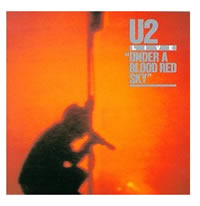
Barack Obama’s victory last night in the U.S. presidential election brought tears to my eyes not only because of the incredible historic nature of his mere candidacy, and the poignancy of his life story, and the righteousness of overcoming the odds and connecting with the majority of Americans to win the White House. The emotions welled up because of his ability to engage me throughout the campaign — even though I was early on a supporter of Hillary Clinton — at a personal level.
It wasn’t just the emails and text messages and the idealistic ubiquitousness of his campaign’s eager, enthusiastic volunteers and supporters. The enthusiasm certainly was catching, however. It was simply the man, and his seeming thoughtfulness and determination. And his determined disregard for the most historic part of his grand run: his color.
He didn’t really disregard it. He simply refused to make it the focus of his identity. The only time he addressed it head-on was with his speech during the primaries about the nature of race in America.
But last night, during his victory speech in downtown Chicago’s Grant Park, he acknowledged that he understands the enormity of his accomplishment very well. He mentioned it right away, in a reference to his place in the racial narrative: “It’s the answer that led those who have been told for so long by so many to be cynical, and fearful, and doubtful of what we can achieve to put their hands on the arc of history and bend it once more toward the hope of a better day.
“Its been a long time coming, but tonight, because of what we did on this day, in this election, at this defining moment, change has come to America.”
That last line struck a familiar note with me. It was a reference to a 1964 Sam Cooke song, one of the former gospel-singer-turned-pop-star’s lesser hits.
“A Change Is Gonna Come” was Cooke’s own acknowledgement of his place in the race narrative, but it was one of his last singles, released after he was killed under mysterious circumstances. (A Los Angeles motel manager claimed she shot him in self-defense.)
Cooke had written “Change,” his only protest song as a follow-up to Bob Dylan’s “Blowin’ in the Wind.” Dylan returned the favor after Cooke’s death with “The Times They Are a-Changin’.”
The slow, measured ballad is not one of Cooke’s well-known, bright, sugary love songs like “You Send Me” or “Cupid,” where he mixed gospel style with pop sentiments. The powerful chorus of the song, which went on to become a familiar refrain to those in the civil rights movement, is, “It’s been a long, a long time coming, but I know a change is gonna come.”
Like Obama said last night, that change has come to America, at last.
Continue reading





 I know exactly where I was the night of June 5, 1983: I was freezing my butt off, soaked to the bone but ignoring my discomfort because I was in musical heaven, surrounded by huge sandstone rocks on both sides, a stormy sky above and a hungry young band called U2 just hitting its stride in front of me, its members playing their hearts out despite the crappy weather.
I know exactly where I was the night of June 5, 1983: I was freezing my butt off, soaked to the bone but ignoring my discomfort because I was in musical heaven, surrounded by huge sandstone rocks on both sides, a stormy sky above and a hungry young band called U2 just hitting its stride in front of me, its members playing their hearts out despite the crappy weather. 






